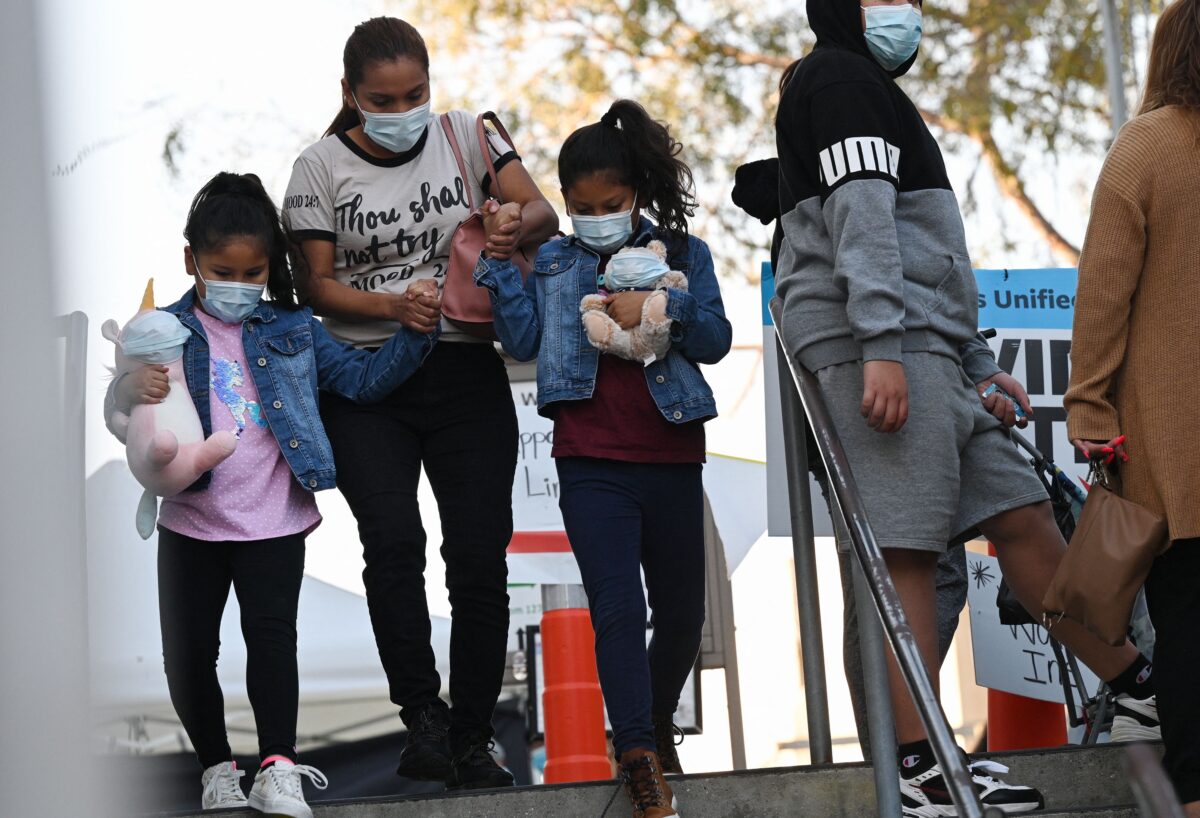Delta Worse for Children Than Omicron: Study
Children were much more likely to suffer severe outcomes from COVID-19 caused by the Delta virus variant when compared to the Omicron variant, according to a new study.Researchers from Case Western Reserve University School of Medicine in Ohio reviewed electronic health records of more than 651,000 American children under 5 years old who had an encounter with health care facilities between September 2021 and January. The records came from the TriNetX Analytics Platform, and patients were from all 50 states. Researchers found that more than 66,000 children were infected with Delta, a variant of the CCP (Chinese Communist Party) virus, and more than 22,772 were infected with Omicron, which displaced Delta as the dominant strain in the United States in late 2021. Analyzing the records, researchers found that children were much more likely to become infected with Omicron, which has shown to be more transmissible than earlier strains, than Delta. But severe clinical outcomes were not as common for patients who were infected with Omicron, adding to the body of evidence that it is not more pathogenic than its precursor. Approximately 20 percent of the Omicron cohort, for instance, went to an emergency department, compared to 25 percent of the Delta cohort. And just 1.7 percent of the children who contracted the Omicron variant were hospitalized, with 3.25 percent of those with Delta needing hospital care. Overall, the reduction of the severity range in clinical outcomes was pegged at 16 to 85 percent. The outcomes were measured during the 14-day window following a positive COVID-19 test. The study was published in the Journal of the American Medical Association following peer review. “The major conclusion to our research was that many more children were infected with Omicron when compared to Delta, but the children who are infected are not impacted as severely as were children infected with the Delta variant,” Dr. Pamela Davis, a research professor at Case Western and one of the co-authors, said in a statement. “However, because there are so many more children infected, our hospitals were affected over the winter months by an influx of young children,” she added. Hospital admissions with COVID-19 spiked among youth 17 and younger in the winter after Omicron became dominant, jumping 362 percent from Dec. 9, 2021, to Jan. 16, according to data reported to the Centers for Disease Control and Prevention. However, admissions have since dropped among the age group to just 0.1 per 100,000 population, the lowest level since mid-2021. The study’s limitations include its reliance on electronic records. Researchers only included children without prior COVID-19 infection and did not measure vaccine effectiveness, nor did they explore how a significant percentage of patients hospitalized with COVID-19 are actually there for another reason.

Children were much more likely to suffer severe outcomes from COVID-19 caused by the Delta virus variant when compared to the Omicron variant, according to a new study.
Researchers from Case Western Reserve University School of Medicine in Ohio reviewed electronic health records of more than 651,000 American children under 5 years old who had an encounter with health care facilities between September 2021 and January. The records came from the TriNetX Analytics Platform, and patients were from all 50 states.
Researchers found that more than 66,000 children were infected with Delta, a variant of the CCP (Chinese Communist Party) virus, and more than 22,772 were infected with Omicron, which displaced Delta as the dominant strain in the United States in late 2021.
Analyzing the records, researchers found that children were much more likely to become infected with Omicron, which has shown to be more transmissible than earlier strains, than Delta.
But severe clinical outcomes were not as common for patients who were infected with Omicron, adding to the body of evidence that it is not more pathogenic than its precursor.
Approximately 20 percent of the Omicron cohort, for instance, went to an emergency department, compared to 25 percent of the Delta cohort.
And just 1.7 percent of the children who contracted the Omicron variant were hospitalized, with 3.25 percent of those with Delta needing hospital care.
Overall, the reduction of the severity range in clinical outcomes was pegged at 16 to 85 percent.
The outcomes were measured during the 14-day window following a positive COVID-19 test.
The study was published in the Journal of the American Medical Association following peer review.
“The major conclusion to our research was that many more children were infected with Omicron when compared to Delta, but the children who are infected are not impacted as severely as were children infected with the Delta variant,” Dr. Pamela Davis, a research professor at Case Western and one of the co-authors, said in a statement.
“However, because there are so many more children infected, our hospitals were affected over the winter months by an influx of young children,” she added.
Hospital admissions with COVID-19 spiked among youth 17 and younger in the winter after Omicron became dominant, jumping 362 percent from Dec. 9, 2021, to Jan. 16, according to data reported to the Centers for Disease Control and Prevention.
However, admissions have since dropped among the age group to just 0.1 per 100,000 population, the lowest level since mid-2021.
The study’s limitations include its reliance on electronic records.
Researchers only included children without prior COVID-19 infection and did not measure vaccine effectiveness, nor did they explore how a significant percentage of patients hospitalized with COVID-19 are actually there for another reason.












